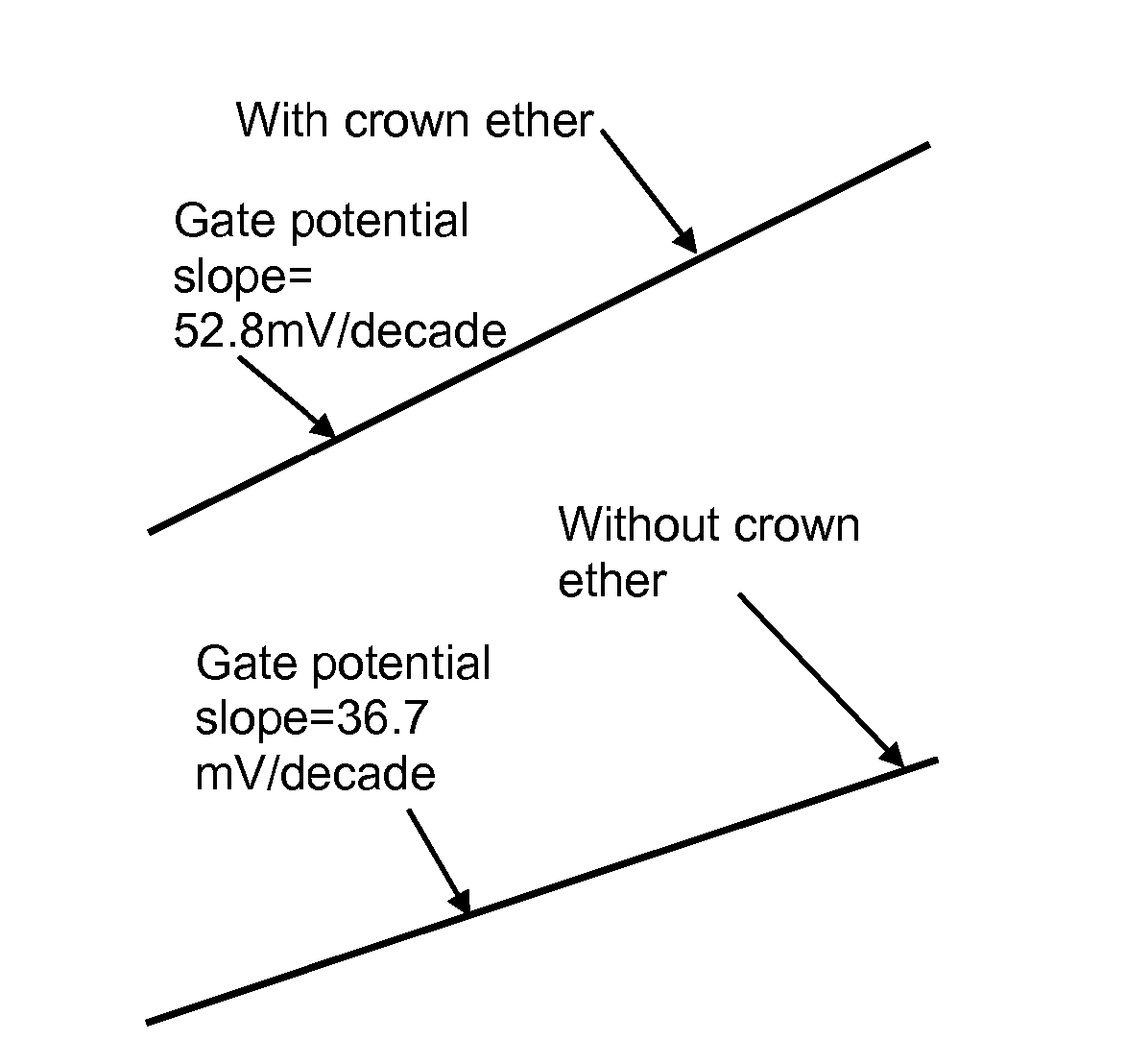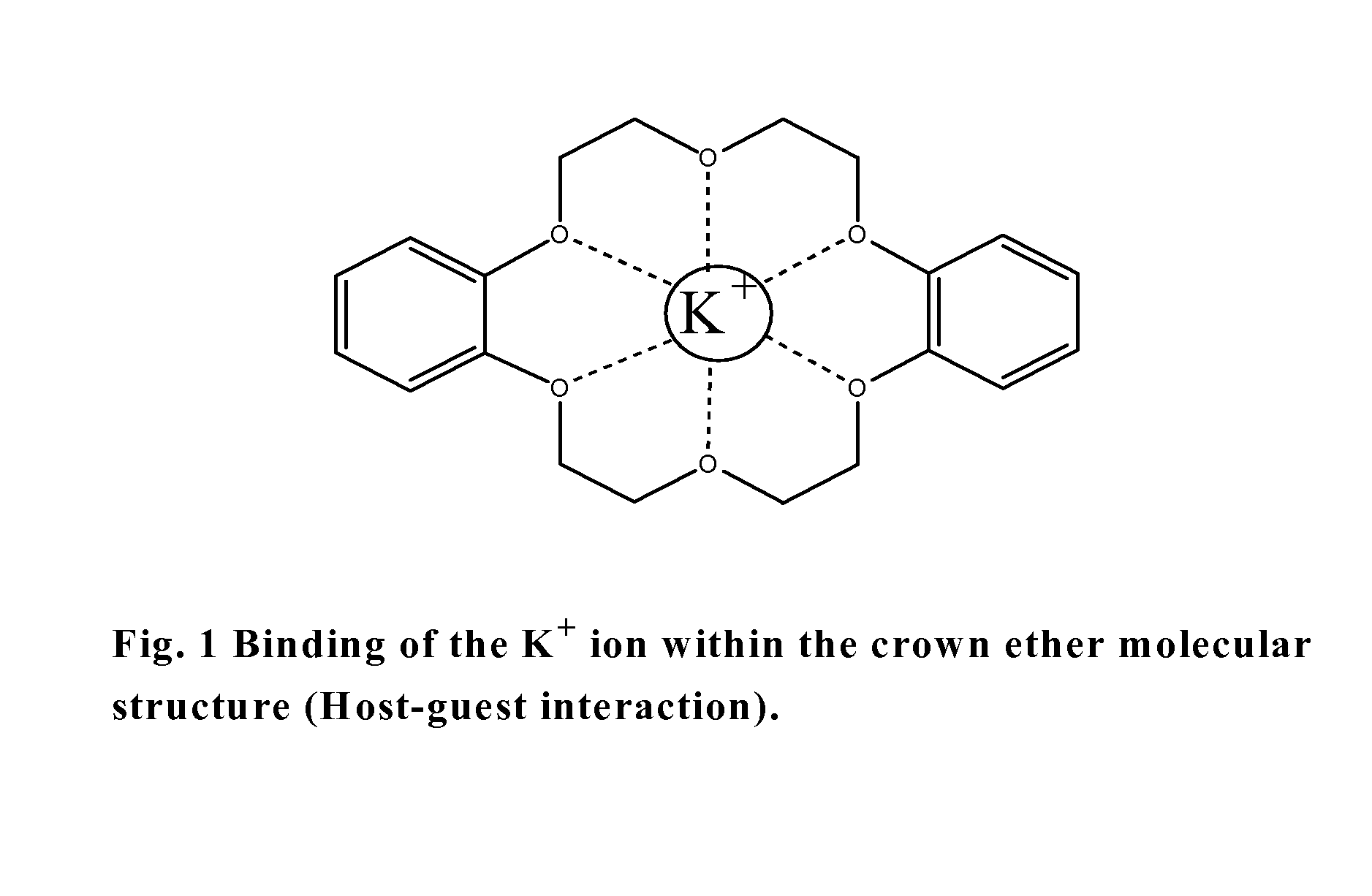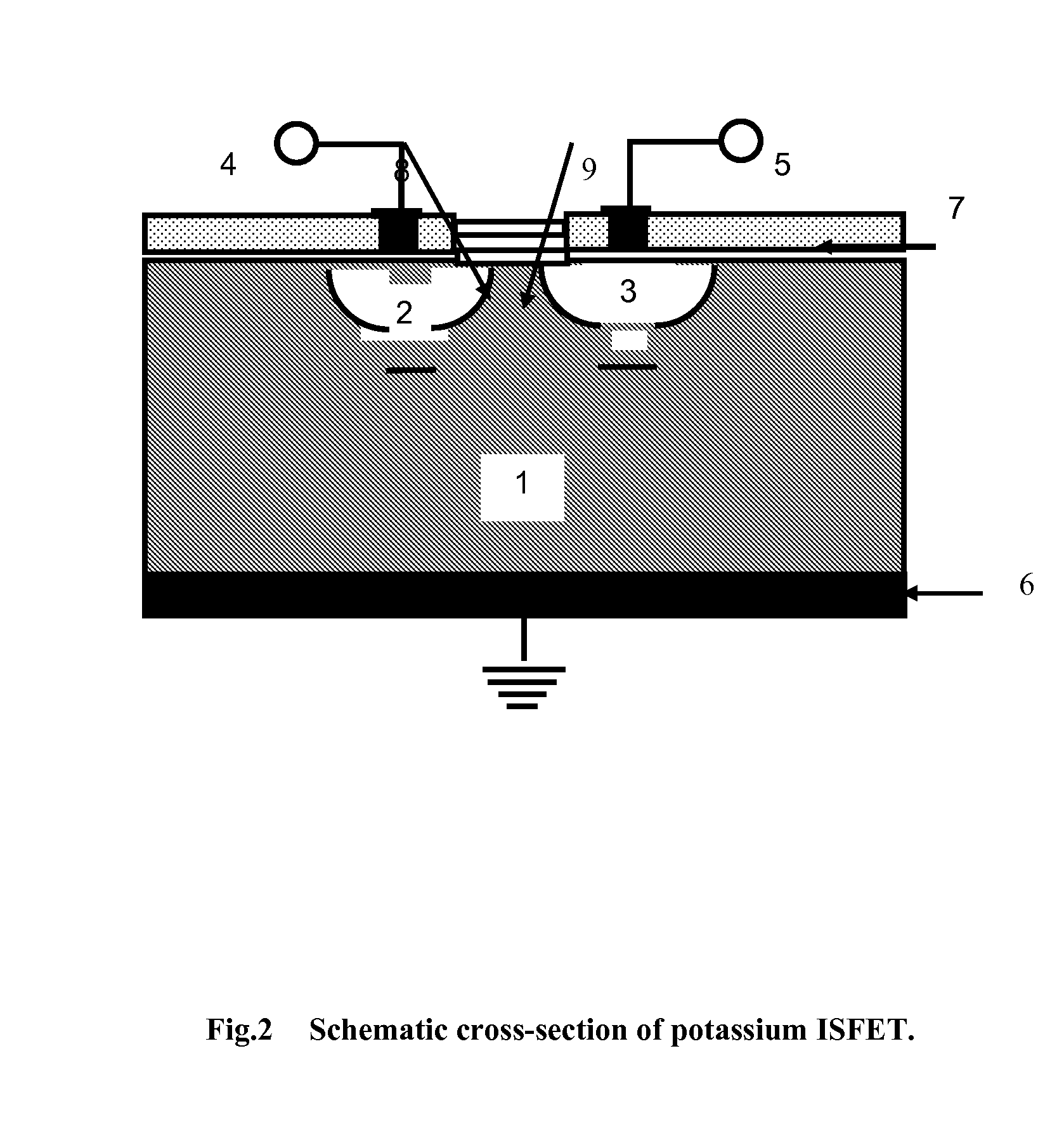Biosensor to determine potassium concentration in human blood serum
- Summary
- Abstract
- Description
- Claims
- Application Information
AI Technical Summary
Benefits of technology
Problems solved by technology
Method used
Image
Examples
example 1
Fabrication and Package of ISFET Device
[0055] The device has been fabricated on P-type Czochralski silicon wafers of resistivity 15-20 ohm-cm (7.4×1014 cm−3) and orientation 100>. Fabrication technology of the ISFET, based on the NMOSFET technology comprised the following processing steps: (i) Field oxidation (1100° C., 30 min. dry O2+120 min. wet O2+30 min. dry O2) giving oxide thickness=0.9 μm. (ii) First photolithography for source / drain N+ diffusion, and oxide etching. (iii) Phosphorous diffusion (1050° C., 30 min.): Sheet resistance2, oxygen flow rate 2 litre / min, a little TCE vapour was carried down the tube by a slow bleed of N2 through TCE bubbler at 25° C., tox=140 nm. (vi) Nitridation (LPCVD), 780° C., 25 min, initial pressure=0.02 torr, deposition pressure of dichlorosilane and ammonia gas mixture=0.2 torr, dichlorosilane=20 cc, ammonia 200 cc, gas ratio=1:10, tNitride=100 nm; annealed at 900° C. for 30 min in N2. (vii) Third photolithography for contact holes, and oxide...
example 2
Deposition of Crown Ether on the Gate Region of ISFET
[0056] Crown ether has been deposited on the ISFET gate by dissolving the crown ether in few drops of chloroform to form a paste. Usually, few micrograms of the ionophore were sufficient to coat the gate ISFET.
example 3
Optimization of Coating on Gate
[0057] 200 mg of crown dissolved in chloroform solvent forms a monolayer of the coating on the surface of the gate. On exposure to air at room temperature, chloroform evaporates at once and leaves behind the ionophore.
PUM
| Property | Measurement | Unit |
|---|---|---|
| Time | aaaaa | aaaaa |
| Mass | aaaaa | aaaaa |
| Mass | aaaaa | aaaaa |
Abstract
Description
Claims
Application Information
 Login to View More
Login to View More - R&D
- Intellectual Property
- Life Sciences
- Materials
- Tech Scout
- Unparalleled Data Quality
- Higher Quality Content
- 60% Fewer Hallucinations
Browse by: Latest US Patents, China's latest patents, Technical Efficacy Thesaurus, Application Domain, Technology Topic, Popular Technical Reports.
© 2025 PatSnap. All rights reserved.Legal|Privacy policy|Modern Slavery Act Transparency Statement|Sitemap|About US| Contact US: help@patsnap.com



